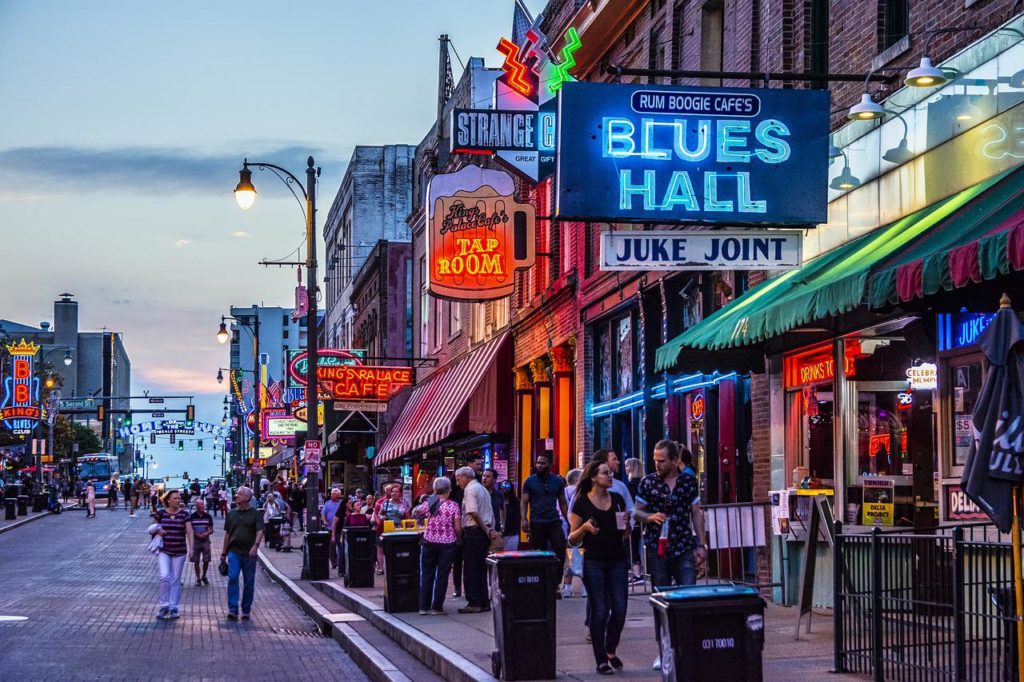
Article Summary: National Parks Near Memphis
National Parks Near Memphis! There’s so much more to the Volunteer State than Graceland. In this article, More Than Just Parks gives you some exciting vacation destinations within a day’s drive of Memphis.
I’ve been to so many of these amazing places since retiring from teaching in 2018. Did I mention that I taught history? I spent a lifetime teaching about the history behind these momentous sites. Then I got to see them firsthand. And now I’m sharing the stories of these incredible places with you. It doesn’t get any better than that!
The name Memphis means Established and Beautiful. Known worldwide as the “Home of the Blues & Birthplace of Rock ‘n’ Roll – not to mention gospel, jazz, R&B, rap and soul. Close to 20 percent of the earliest inductees (24 of the 97) in the Rock ‘n’ Roll Hall of Fame have come from within a 100-mile radius of Memphis.
But it’s also home to some amazing national parks that are within a day’s drive (or less) of the city.

So, What Is A National Park?
We get asked that question a lot because there’s a difference between a “national park” and a “national park site.” To help you understand that difference you might want to check out our article titled: What Is A National Park Really?
If you’re planning a trip to Memphis then one book that I highly recommend is: Walking in Memphis: 16 Historic Tours by Ron McDonald.
Now let’s go ahead with 10 reasons why you’ll want to hop in your car and make a day’s drive from Memphis to one of these truly amazing places.
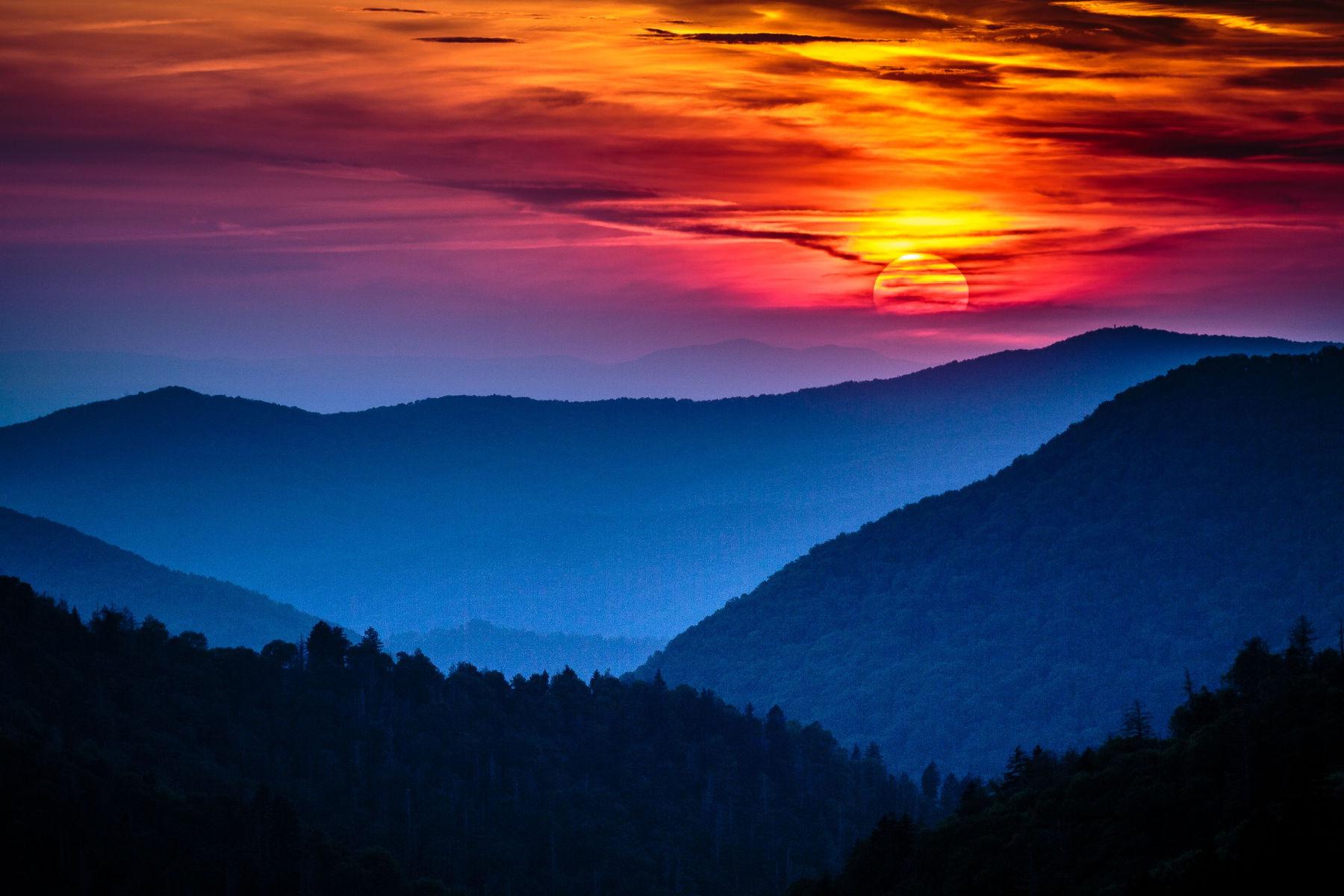
Table Of Contents: National Parks Near Memphis
Best National Parks Near Memphis
1. Big South Fork National River & Recreation Area
Distance From Memphis: Five hours & 45 minutes via I-40 & I-40 E.
Encompassing 125,000 acres of the Cumberland Plateau, Big South Fork National River and Recreation Area protects the free-flowing Big South Fork of the Cumberland River and its tributaries.
The area boasts miles of scenic gorges and sandstone bluffs, is rich with natural and historic features and has been developed to provide visitors with a wide range of outdoor recreational activities.
Outdoor activities are plentiful and include the following:
- Enjoy A Sunrise Or Sunset: There are overlooks all along the Big South Fork River gorge where you can catch the suns first or last rays of the day.
- Take A Hike: You can choose from any number of hikes ranging from a lazy stroll along the river to a multi-day hike through the backcountry.
- Go Horseback Riding: Big South Fork has miles of horse trails, stabling facilities at Bandy Creek Stables and even two equestrian campgrounds at Station Camp in Tenn. and Bear Creek in Ky.
- See The Wildflowers: In the spring time you can find spectacular displays of wildflowers and native plants along many trails in the park.
- Biking, Climbing Or Whitewater Rafting: Try whitewater rafting the Big South Fork River, mountain biking through the backcountry or rock climbing on the miles of cliff lines throughout the park. (Source: NPS)
RELATED: 12 EPIC National Parks Near Atlanta You’ll Love
2. Chickamauga & Chattanooga National Military Park
Distance From Memphis: Five hours & 10 minutes via I-40 & I-24 E.
Chickamauga & Chattanooga National Military Park is a military park located in northern Georgia and southeastern Tennessee.
The park was established in 1890 to commemorate the battles of Chickamauga and Chattanooga, two significant battles fought during the American Civil War.
The Battle of Chickamauga was fought on September 19 and 20, 1863, and was one of the bloodiest battles of the Civil War. The Confederate Army, under the command of General Braxton Bragg, defeated the Union Army, under the command of General William Rosecrans, in a hard-fought battle that lasted two days.

The Battle of Chattanooga, fought on November 23 to 25, 1863, was a turning point in the Civil War, as it marked the beginning of the Union Army’s push into the Confederate heartland.
Under the command of General Ulysses S. Grant, the Union Army defeated Confederate forces and opened the door for a deeper advance into the Confederacy.
Established To Commemorate The Bravery & Sacrifices Of The Soldiers Who Fought There
Chickamauga & Chattanooga National Military Park was established to commemorate the bravery and sacrifices of the soldiers who fought in the battles of Chickamauga and Chattanooga. The park contains several monuments and markers, as well as several miles of walking trails that allow visitors to explore the battlefields and learn about the history of the Civil War.
The park is also home to the Lookout Mountain Battlefield, which was the site of a battle fought on November 24, 1863. Visitors can take a scenic drive up Lookout Mountain to see the battlefield, as well as visit the Point Park, which provides panoramic views of the surrounding countryside.
Whether you’re a history buff, Civil War enthusiast, or simply someone interested in learning about America’s past, Chickamauga & Chattanooga National Military Park is a must-visit destination. With its rich history, beautiful setting, and educational opportunities, it’s no wonder that the park attracts visitors from all over the world.
RELATED: Top 10 BEST Civil War Sites in America
And If You’re A History Buff Like Me . . .
If you love history as much as I do and you’re particularly interested in how this conflict impacted the men who fought in it then I heartily recommend Six Armies in Tennessee: The Chickamauga and Chattanooga Campaigns by Steven E. Woodworth.
Woodworth is a gifted writer who uses primary sources skillfully to take his readers into the hearts and minds of the everyday soldiers.
3. Fort Donelson National Battlefield
Distance From Memphis: Two hours and 41 minutes via I-40 & TN-76 E.
Fort Donelson National Battlefield is a site that dates back to the American Civil War, specifically to the Battle of Fort Donelson, which took place from February 11 to February 16, 1862.
During the Civil War, the Confederate army built Fort Donelson to protect the Cumberland River, which was a vital transportation route for Confederate troops and supplies.
In February of 1862, Union forces led by General Ulysses S. Grant launched an attack on the fort, and after a fierce battle, Confederate forces surrendered on February 16.
The Battle of Fort Donelson was significant because it was the first major Union victory in the western theater of the Civil War, and it helped secure control of the Cumberland River for the Union.
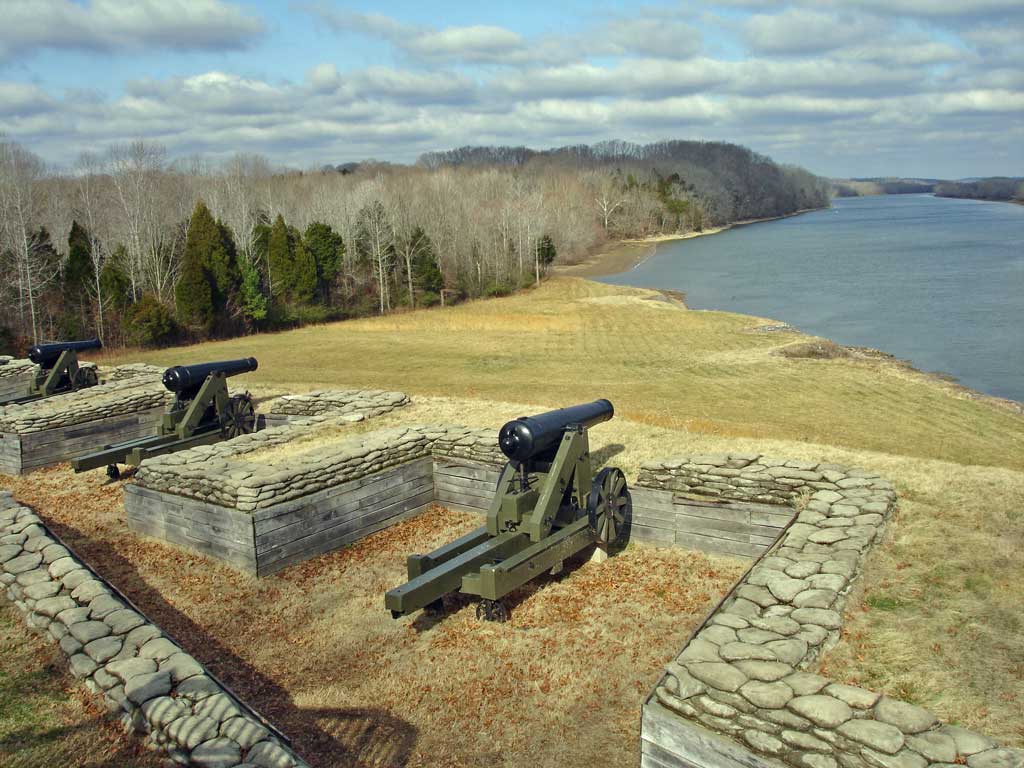
A Site That Was Abandoned & Then Embraced
After the war, the site was largely abandoned until the early 20th century, when the federal government began acquiring land in the area and preserving it as a military park.
In 1928, the site was officially established as Fort Donelson National Military Park, and in 1985, it was redesignated as Fort Donelson National Battlefield.
Today, the site features a museum, interpretive trails, and restored fortifications, and it is preserved as a memorial to the soldiers who fought and died there during the Civil War.
RELATED: Top 10 BEST Civil War Sites in America
Things To Do At Fort Donelson
Fort Donelson National Battlefield offers a variety of activities and attractions for visitors to experience. Some of the things you can do at the park include:
- Tour the Visitor Center: The Visitor Center features exhibits on the history of the Battle of Fort Donelson, the Civil War in the Western Theater, and the soldiers who fought there.
- Explore the Historic Site: Visitors can explore the restored fortifications, including the earthen fortifications, the Confederate gun batteries, and the remains of the Union siege works.
- Hike the Interpretive Trails: The park features several trails, including a self-guided tour trail that takes visitors through the key points of the battle.
- Attend Programs and Events: The park offers a variety of programs and events throughout the year, including living history demonstrations, ranger-led tours, and special events.
- Picnic and Relax: The park has several picnic areas where visitors can relax and enjoy a meal.
- Camping: The park also has a campground for visitors who want to spend the night.
- Fishing: Fishing is allowed in the park’s waterways, subject to state regulations.
In addition to these activities, Fort Donelson National Battlefield is a great place to learn about American history, the Civil War, and the sacrifices made by the soldiers who fought there.
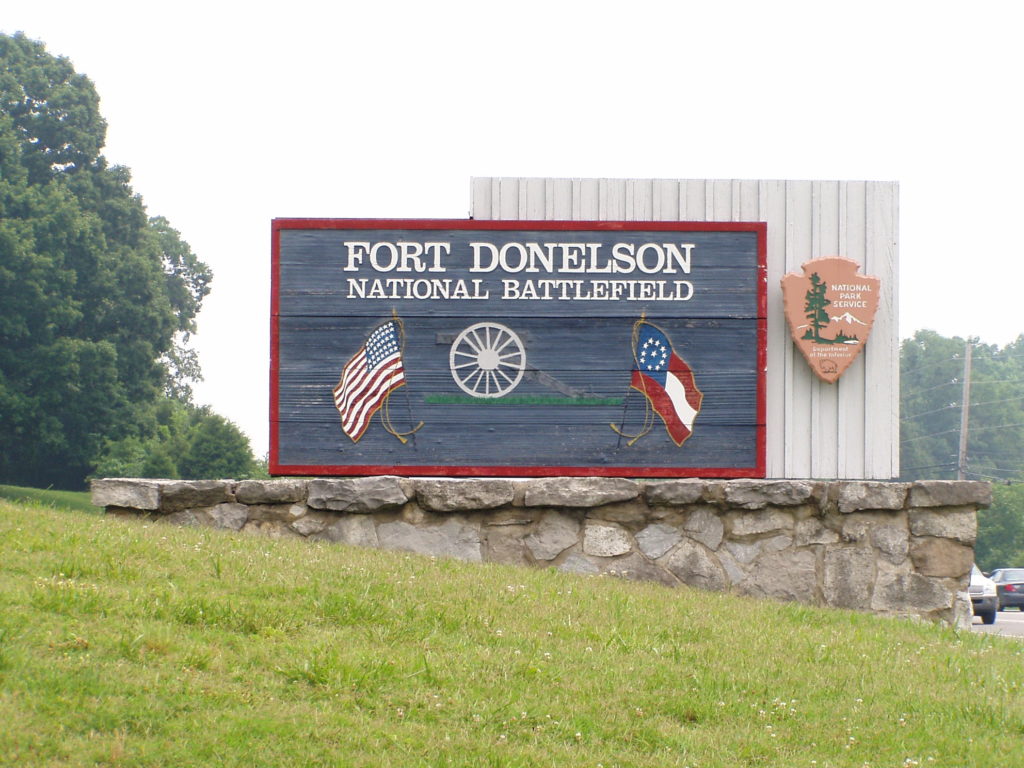
More National Parks Near Memphis
4. Great Smoky Mountains National Park
Distance From Memphis: Six hours via I-40 & I-40 E.
The Great Smoky Mountains National Park is the is the most visited national park in the country and a true monument to the beauty of the Appalachians.
Established in the depths of the Great Depression by generous local communities, wealthy philanthropists like John D. Rockefeller Jr., and the U.S. government, this pristine area was spared from further logging and development and is now a premiere outdoor destination belonging to all Americans.
Nestled in the misty mountains of Tennessee and North Carolina, Great Smoky Mountains is easily one of the most beautiful national parks on the planet.
If you’re wondering how crowded the park is considering it’s the most visited national park in the country – you might be surprised by the answer.
While it certainly depends on where you go in the park and what time of year you visit, Great Smoky Mountains doesn’t see anywhere near the crowding that parks like Zion or Yosemite do these days.
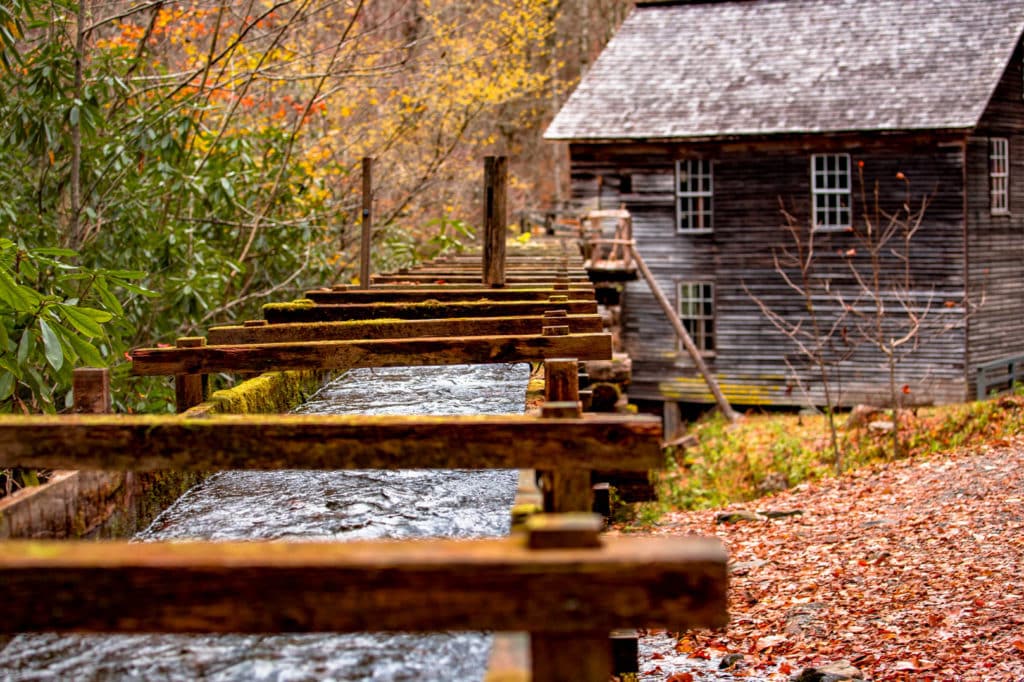
About Great Smoky Mountains
Nestled in the heart of the Southern Appalachian Mountains is a place where time seems to have stood still.
Here are the last remains of the ancient forests that once dominated the Eastern United States.
In the words of President Franklin Roosevelt,
“there are trees here that stood before our forefathers ever came to this continent; there are brooks that still run as clear as on the day the first pioneer cupped his hand and drank from them.”
These misty mountains are home to America’s most visited national park, a land of vast hardwood forests, clear mountain streams, frontier cabins, and iconic wildlife.
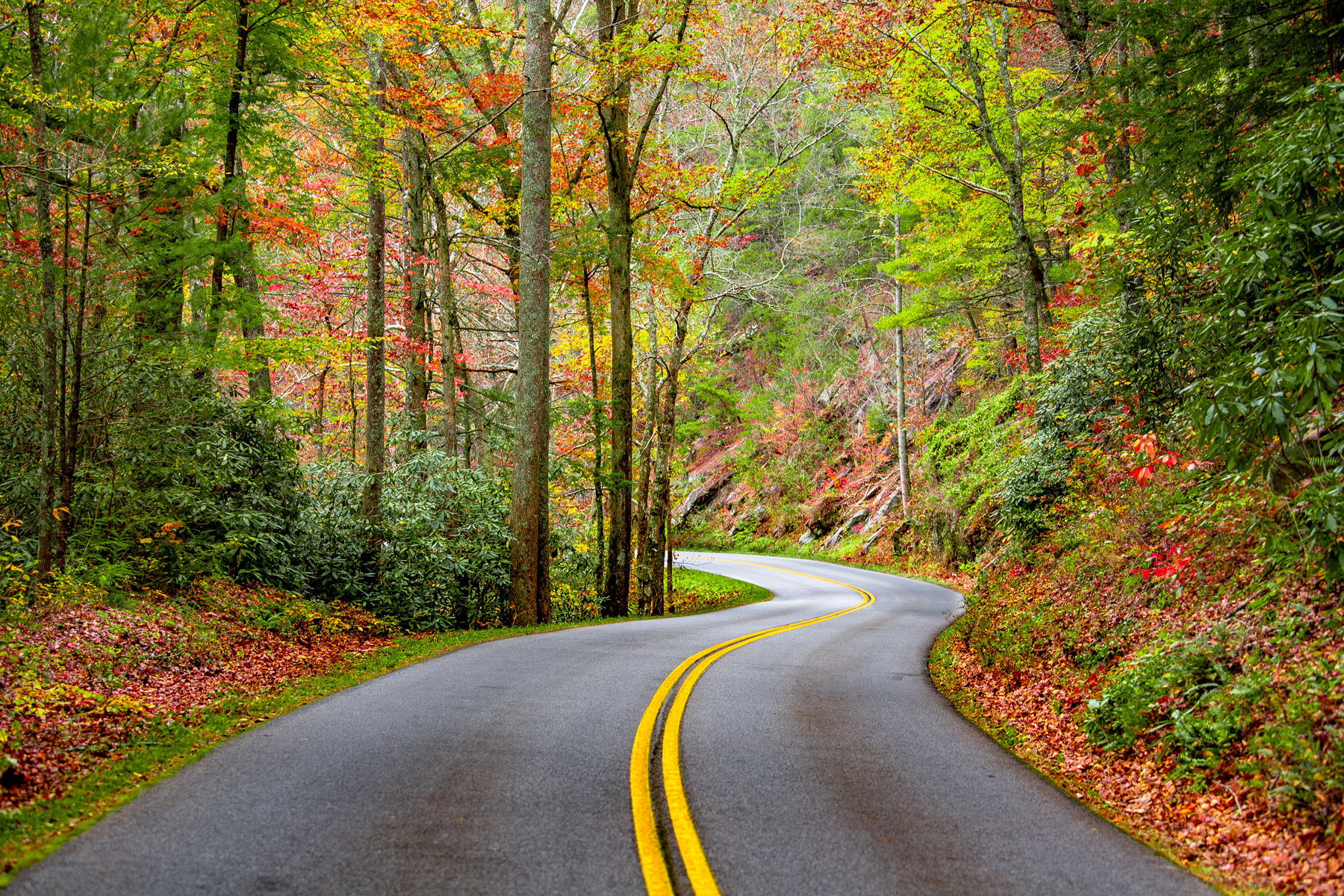
RELATED: 15 AMAZING Facts About Great Smoky Mountains National Park
Watch Our Award-Winning Video
5. Manhattan Project National Historical Park
Distance From Memphis: Five hours & 24 minutes via I-40 & I-40 E.
The Manhattan Project National Historical Park was established to commemorate the history and legacy of the Manhattan Project, the top-secret World War II program that developed the first atomic bombs.
The Manhattan Project was launched in 1942, with the goal of developing an atomic bomb before Nazi Germany could. The project brought together some of the world’s leading scientists, engineers, and military leaders, who worked in secret at several locations around the United States, including Los Alamos, New Mexico, Oak Ridge, Tennessee, and Hanford, Washington.
After three years of intense scientific and technological effort, the first atomic bomb was successfully detonated in July 1945 at Alamogordo, New Mexico. The bombs were later used in August of that year in the atomic bombing of Hiroshima and Nagasaki, Japan, which led to Japan’s surrender and the end of World War II.

Established To Commemorate The History & Legacy Of The Manhattan Project
The Manhattan Project National Historical Park was established in November 2015, to commemorate the history and legacy of the Manhattan Project.
The park consists of three sites: the Manhattan Project National Historical Park in Los Alamos, New Mexico, the Manhattan Project National Historical Park in Oak Ridge, Tennessee, and the Manhattan Project National Historical Park-Hanford in Washington.
At these sites, visitors can learn about the history of the Manhattan Project and the science and technology behind the development of the atomic bomb. They can also explore historic buildings and landmarks, see exhibits on the history of the project, and attend ranger-led programs and tours.

6. Natchez Trace Parkway
Distance From Memphis: Two hours & 21 minutes via I-22 & Natchez Trace Parkway.
The Natchez Trace Parkway is a scenic parkway and recreational trail that runs for 444 miles through the southern United States.
The parkway winds its way from Nashville, Tennessee to Natchez, Mississippi, following the historic Natchez Trace, a historic travel and trade route that was used by American Indians, settlers, and traders for thousands of years.

Established To Preserve The Historic & Cultural Resources Along The Trace
The Natchez Trace Parkway was established in 1938 as a way to preserve the historic and cultural resources along the trace, as well as to provide a scenic drive for visitors. The parkway is unique in that it is limited-access, meaning that there are no commercial or residential developments along the route, and it is designed to provide a quiet, natural setting for visitors to enjoy.
Along the parkway, visitors can explore historic sites, including old trading posts and Civil War battlefields, and see a variety of wildlife, including deer, turkey, and other animals. The parkway also features several campgrounds, picnic areas, and hiking trails, making it a popular destination for outdoor enthusiasts.
One of the highlights of the Natchez Trace Parkway is the scenic drive, which provides breathtaking views of the southern landscape, including rolling hills, forests, and open fields. Visitors can also stop at interpretive centers along the route to learn more about the history and cultural significance of the Natchez Trace.
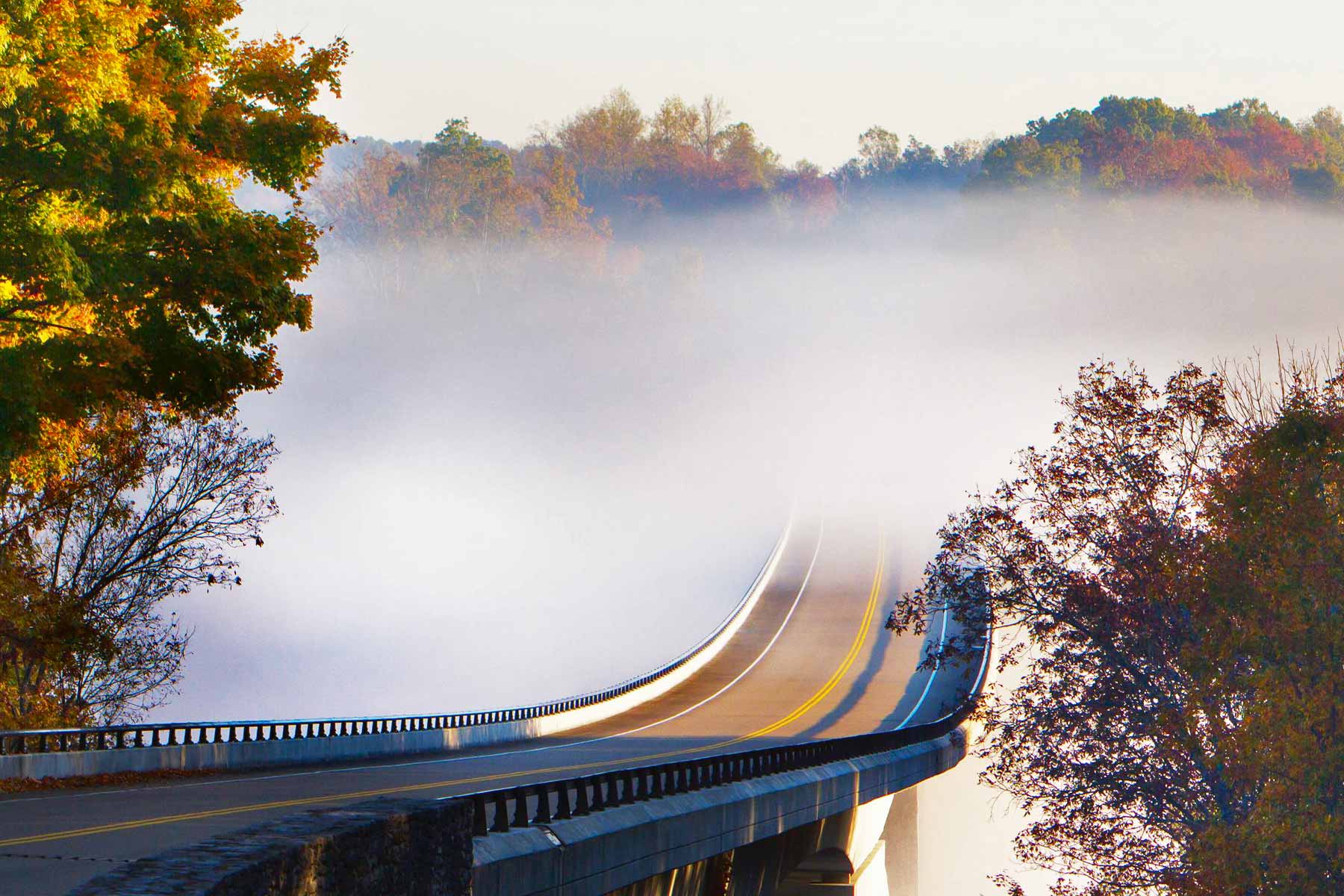
RELATED: Top 10 BEST USA Road Trips of a Lifetime
7. Natchez Trace Scenic National Trail
Distance From Memphis: One hour & 40 minutes via I-22.
The Natchez Trace Scenic National Trail is a 444-mile hiking and horseback riding trail that runs from Natchez, Mississippi to Nashville, Tennessee. The trail follows the historic Natchez Trace, a historic travel and trade route that was used by American Indians, settlers, and traders for thousands of years.
The Natchez Trace Scenic National Trail is one of the few national scenic trails in the United States and is managed by the National Park Service. The trail is designed for non-motorized use and is open to hikers, horseback riders, and cyclists, providing a unique and peaceful way to experience the natural beauty of the southern United States.
Along the trail, visitors can explore the diverse southern landscape, including rolling hills, forests, and open fields. They can also see a variety of wildlife, including deer, turkey, and other animals, and visit historic sites, including old trading posts and Civil War battlefields.
In addition to its natural beauty, the Natchez Trace Scenic National Trail is also a great place to learn about American history and the cultural significance of the Natchez Trace.
Visitors can stop at interpretive centers along the route to learn more about the history of the trace, the people who used it, and the cultural and natural resources that are found along the way.
Best Places To Visit
Imagine what it was like to journey on the Old Trace. The pioneers endured bad food, bugs, disease, heat, swollen rivers, and dangerous swamps.
You don’t have to imagine if you follow the Sunken Trace.
The good news is that it only will take you five minutes, instead of the endless days these folks endured, to walk this trail.
Let your imagination carry you back to the early 1800s and be thankful you weren’t there to share in these privations.
Still More National Parks Near Memphis
8. Obed Wild & Scenic River
Distance From Memphis: Five hours & 15 minutes via I-40 & I-40 E.
The Obed Wild & Scenic River is a protected area located in eastern Tennessee, near the city of Crossville.
The river and its tributaries are known for their stunning scenery, recreational opportunities, and unique geology and history.
The Obed Wild & Scenic River was designated as a Wild & Scenic River by the U.S. Congress in 1976, which protects the river and its surrounding area from development and ensures that it remains free-flowing and accessible to the public for future generations to enjoy.
It’s known for its world-class whitewater rafting and kayaking, as well as its fishing and other recreational opportunities. The river and its tributaries flow through deep gorges and towering cliffs, offering breathtaking views and a unique landscape for visitors to explore.
In addition to its natural beauty, the Obed Wild & Scenic River is also rich in cultural and historical significance.
Visitors can explore several historic sites along the river, including old homesteads, mining operations, and Civil War battlefields, as well as visit several interpretive centers to learn more about the history and cultural significance of the area.
9. Shiloh National Military Park
Distance From Memphis: One hour & 53 minutes via US-72 E & TN-57 E.
Shiloh National Military Park was established in 1894 to commemorate the Battle of Shiloh, which took place on April 6-7, 1862, during the American Civil War.
The Battle of Shiloh was one of the bloodiest battles of the Civil War, with more than 23,000 soldiers killed, wounded, or missing.
The Union forces, led by General Ulysses S. Grant, were able to repel a Confederate attack and secure a strategic victory, which helped to set the stage for the Union’s eventual success in the Western theater of the war.
Shiloh National Military Park was established to commemorate the sacrifices made by the soldiers who fought in the Battle of Shiloh, and to preserve the historic and cultural resources associated with the battle.
The park features a number of monuments and markers, including regimental monuments, cannons, and tablets, which commemorate the events of the battle and honor the soldiers who fought and died there.
In addition to its historical significance, Shiloh National Military Park is also a popular destination for outdoor enthusiasts, offering a number of recreational opportunities, including hiking, camping, and fishing.
Visitors can also explore the park’s historic visitor center, which features exhibits and educational programs that provide an in-depth look at the Battle of Shiloh and its place in American history.
RELATED: 10 BEST Civil War Sites In America
To Learn More About Shiloh
So many books have been written about the Civil War and the various battles that took place. Of course, the big three authors when it comes to war are, in my humble opinion, Bruce Catton, Shelby Foote and James M. McPherson.
What these three have written are the best collections of books encompassing the war as a whole.
You can’t go wrong with any of these authors. My personal favorite is Shelby Foote. I have read his fabulous three volume history of the Civil War–twice!
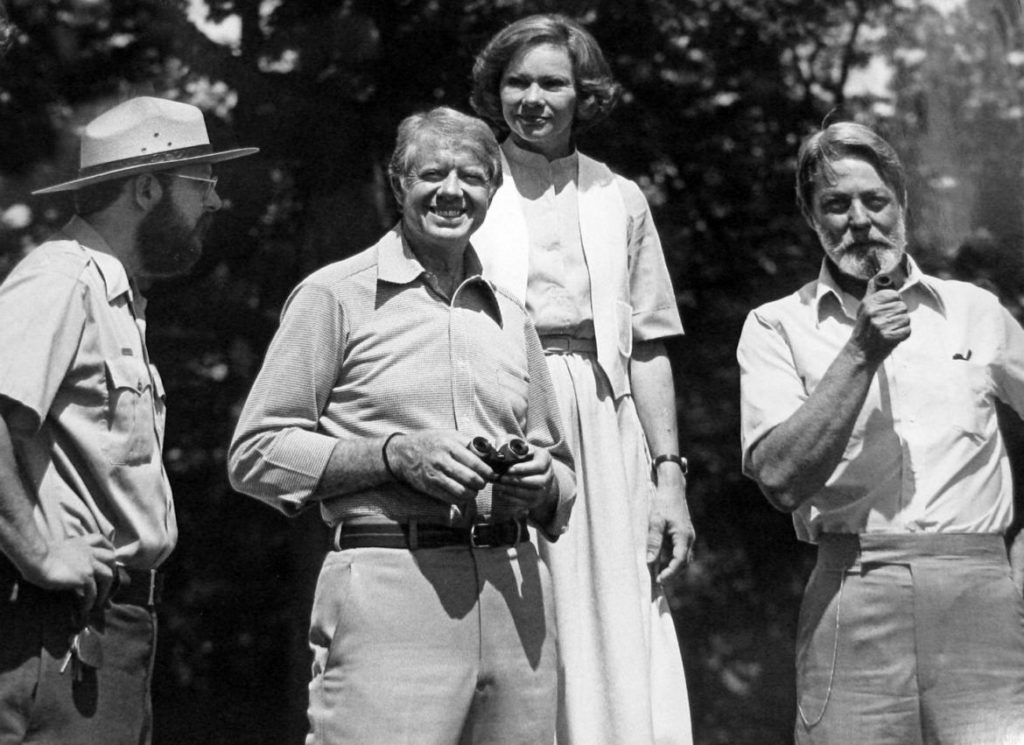
RELATED: 22 EPIC Pennsylvania National Parks Worth Visiting
Read About The Battle Of Shiloh
When it comes to the Battle of Shiloh, however, I’m going to recommend three books none of which have been written by the three men mentioned above (please forgive me). I previously recommended one of these and it’s still the best of the bunch in my opinion, but I’m going to recommend it again along with two others.
To gain an understanding of this battle, its strategic importance, and how it influenced the outcome of the war, I recommend:
- Shiloh and the Western Campaign of 1862, by O. Edward Cunningham
- Shiloh, Bloody Shiloh by Wiley Sword
- Shiloh: The Battle That Changed the Civil War by Larry J. Daniel.
A Few Of My Favorite Places To Visit At The Park
At Shiloh Military Park visitors can dive into the past. Things to do include:
- Museums/Interpretive Centers: Both the Shiloh Battlefield and the Corinth Civil War Interpretive Center have large exhibit spaces dedicated to showing visitors the tools of war, the people who used those tools, and the effects of their use.
- Audio Visuals/Films: Both the Shiloh Battlefield and the Corinth Civil War Interpretive Center have excellent films and displays. Shiloh Battlefield is now showing the award-winning film, Shiloh: Fiery Trial. The Corinth Center has two short modern, state of the art films – one on the Battle of Shiloh and one on the Battle of Corinth, and a new movie entitled Corinth: A Town Amidst War.
- Self-Guided Auto Tour: The Shiloh Battlefield has a 12.7 mile auto tour route with 22 tour stops at such famous places as the Peach Orchard, the Hornet’s Nest, and the Albert Sidney Johnston death site. Visitors may also take auto and walking tours of Civil War Corinth, MS. This route includes surviving Civil War fortifications, homes used by Civil War Generals, and portions of the Corinth Battlefield.
- Ranger Programs: The park staff at Shiloh Battlefield conducts daily ranger-led interpretive programs during the peak season from Memorial Day to Labor Day.
- Living History: Both Shiloh and Corinth host several living history and special events throughout the year, mostly from April to October.
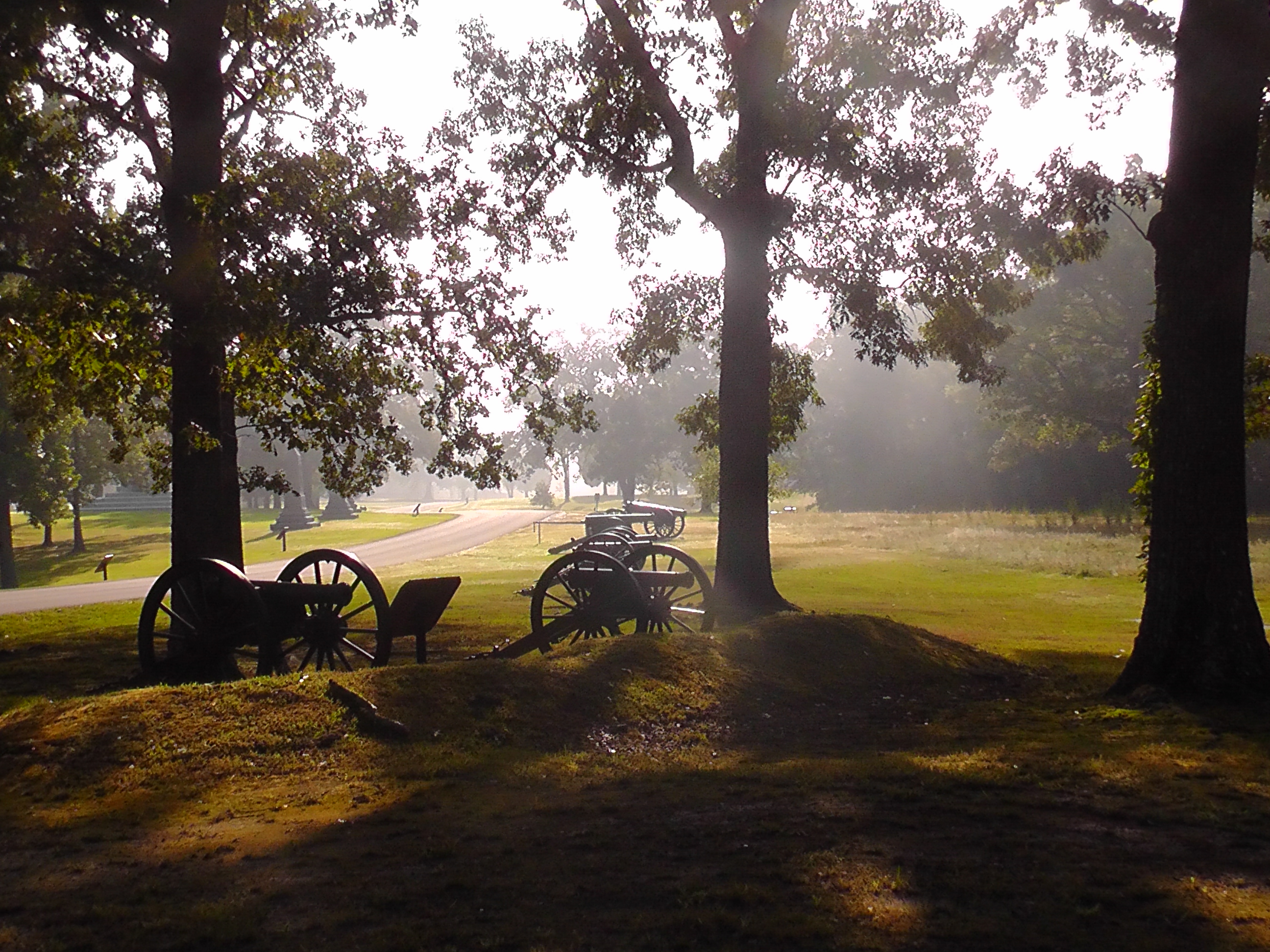
10. Stones River National Battlefield
Distance From Memphis: Three hours & 21 minutes via I-40.
Stones River National Battlefield is a protected area located in central Tennessee, near the city of Murfreesboro.
The park was established in 1927 to commemorate the Battle of Stones River, which took place on December 31, 1862, to January 2, 1863, during the American Civil War.
The Battle of Stones River was one of the bloodiest battles of the Civil War, with more than 23,000 soldiers killed, wounded, or missing. The Union forces, led by General William Rosecrans, were able to repel a Confederate attack and secure a strategic victory, which helped to maintain Union control of middle Tennessee and set the stage for further Union advances in the region.
Stones River National Battlefield was established to commemorate the sacrifices made by the soldiers who fought in the Battle of Stones River, and to preserve the historic and cultural resources associated with the battle. The park features a number of monuments and markers, including regimental monuments, cannons, and tablets, which commemorate the events of the battle and honor the soldiers who fought and died there.
In addition to its historical significance, Stones River National Battlefield is also a popular destination for outdoor enthusiasts, offering a number of recreational opportunities, including hiking, camping, and fishing.
Visitors can also explore the park’s historic visitor center, which features exhibits and educational programs that provide an in-depth look at the Battle of Stones River and its place in American history.
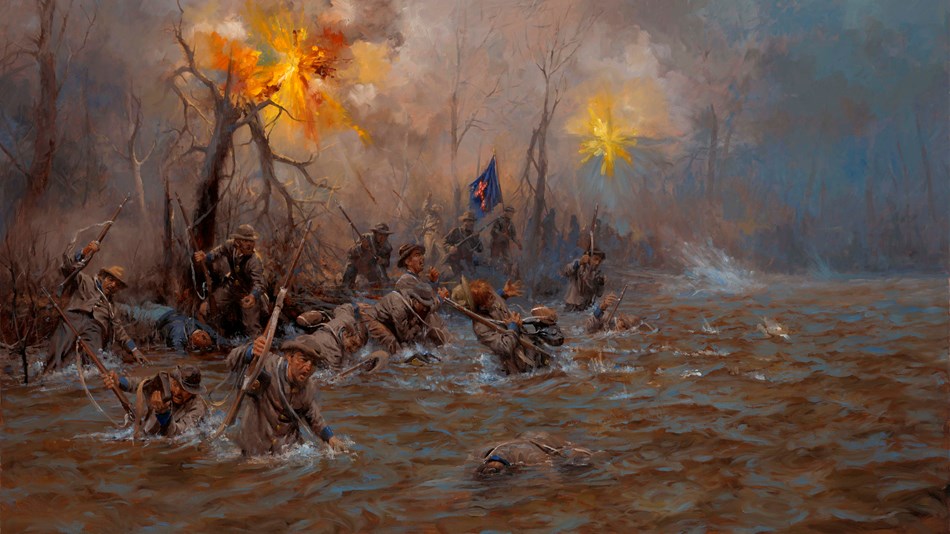
Things To Do At Stones River
The landscapes of Stones River National Battlefield offer visitors an array of historic and natural features to experience bicycling, hiking and walking.
If you are a history buff then two places I recommend visiting are Fortress Rosencrans and the Stones River National Cemetery.
If you are a film buff then you should know that outdoor filming activities [outside of areas managed as wilderness] involving five persons or less and equipment that will be carried at all times, except for small tripods used to hold cameras, is permitted.
National Parks Near Memphis FAQ
Great Smoky Mountains. World renowned for its diversity of plant and animal life, the beauty of its ancient mountains, and the quality of its remnants of Southern Appalachian mountain culture, this is America’s most visited national park.
Great Smoky Mountains National Park. Distance From Memphis: Six hours via I-40 & I-40 E. The Great Smoky Mountains National Park is the is the most visited national park in the country and a true monument to the beauty of the Appalachians.
Why Trust Us About National Parks Near Memphis?
We’re Jim Pattiz and Will Pattiz, collectively known as the Pattiz Brothers (and sometimes the Parks Brothers) and we absolutely LOVE the national parks.
You should probably know that we don’t just make this stuff up out of thin air. We’ve spent our entire adult lives exploring and filming America’s national parks and public lands.
We’ve worked with the National Park Service, the Department of Interior, USDA, and the U.S. Forest Service for years creating films on important places and issues. Our work has been featured in leading publications all over the world and even some people outside of our immediate family call us experts on the national parks.
Meet The Parks Brothers
Map Of National Parks Near Memphis
List Of National Parks Near Memphis
- Big South Fork National River & Recreation Area
- Chickamauga & Chattanooga National Military Park
- Fort Donelson National Battlefield
- Great Smoky Mountains National Park
- Manhattan Project National Historical Park
- Natchez Trace Parkway
- Natchez Trace Scenic National Trail
- Obed Wild & Scenic River
- Shiloh National Military Park
- Stones River National Battlefield
We Hope You’ll Follow Our Journey

Our goal here at More Than Just Parks is to share the beauty of America’s national parks and public lands through stunning short films in an effort to get Americans and the world to see the true value in land conservation.
We hope you’ll follow our journey through the parks and help us to keep them the incredible places that they are. If you’re interested in joining the adventure then please sign up below!

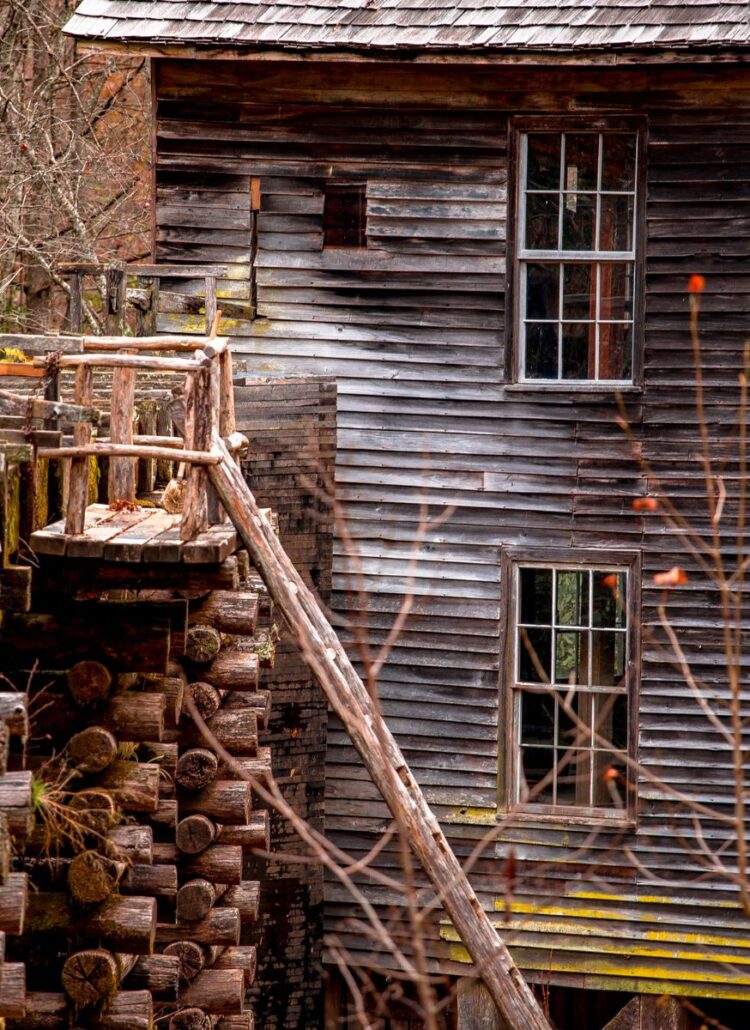
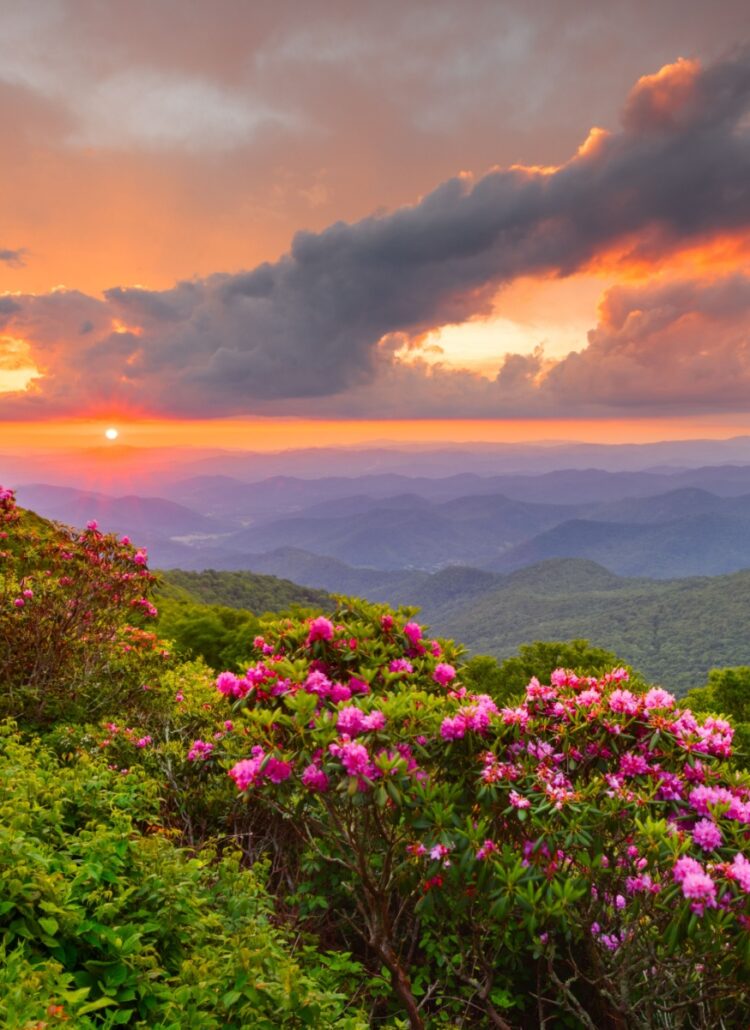


Leave a Reply